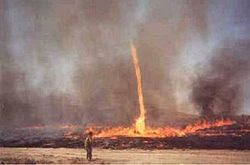Yesterday I spent some time surveying those areas that we have already burned, including both the prairies and savannas. It doesn't take long this time of year, especially with a few warm days, for a profusion of plants to appear, even just a few days after a burn.
Some of these early arrivals are shooting star, golden Alexanders, dooryard violet, pussy toes, stiff goldenrod, pale Indian plantain, several of the Silphiums, and glade mallow.

Shooting star (
Dodecatheon meadii) is one that is especially prolific right now in our White Oak Savanna (Unit 12A). This is especially impressive because that savanna was only burned six days ago! This species was already present in this savanna before we started restoration, but was suppressed under the heavy shade. As soon as we removed all of the "bad" trees and opened the area up, it flourished. It usually takes six to seven years in a restoration to get shooting star established from seed, but it is often able to hang on in the vegetative state for many years in degraded savannas. You can see evidence of the recent burn because the tops of the leaves are damaged. At the time of the burn, just the leaf tips were above ground. Since the fire only penetrates a few millimeters into the soil, most of the plant is protected.

Golden Alexanders (
Zizia aurea) is a prairie/savanna species that does well in restorations and is one of the first species to appear in the spring. Again, it pops up quickly after a burn in both our planted prairies (such as the Barn Prairie) and savannas. Again, this species was also already flourishing in the savannas six days after the burn.

In the south-facing slope, which had been burned almost two weeks ago, things have had more time to grow. Little bluestem (
Schizachyrium scoparium) is a "warm-season" grass that is characteristic of this short-grass prairie. Although it doesn't flower until mid August, it begins to grow early. Because it is cespitose (a clump-former) it is fairly easy to identify early. In fact, its characteristic clumps can be spotted right after the burn (see Tom's Blog of 27 March 2010 for a photo). The photo here shows one of these clumps with charcoal still visible in the center of the clump and the leaves starting to grow.

Bloodroot (
Sanguinaria canadensis) is a typical woodland spring ephemeral that also thrives in our savannas. The photo shows a flowering patch that appeared just a few days after the savanna burn in one of our bur oak savannas (Unit 19B). Typical of many spring ephemerals, the flowers appear before the leaves.

One of the more common goldenrods in our planted prairies is stiff goldenrod (
Solidago rigida). This species is fairly easy to identify from its characteristic leaf shape, and the fact that it forms fairly extensive clumps. Even though it does not flower until late August, it appears early in the spring.
The species shown here are some that are fairly easy to identify even when they are beginning shoots. Those serious about restoration ecology would be advised to learn to identify plants at these early stages, because there are also a lot of "bad" plants that arise early that you might want to eliminate by spot spraying. Obviously, one does not want to eliminate good plants at the same time.


























